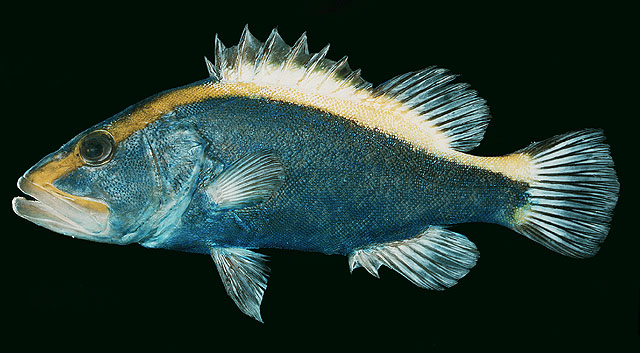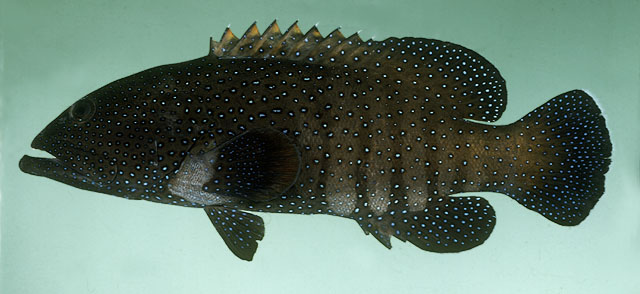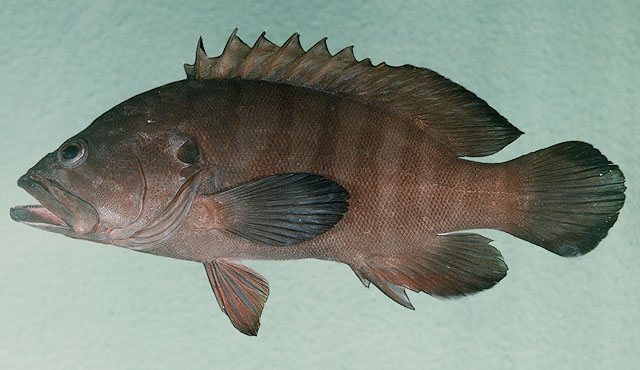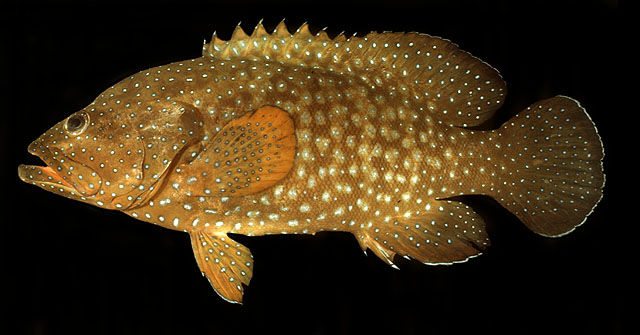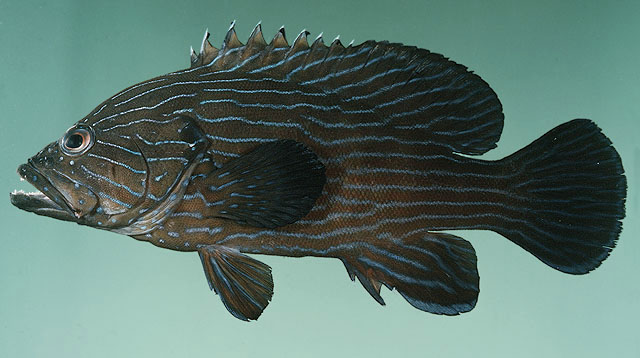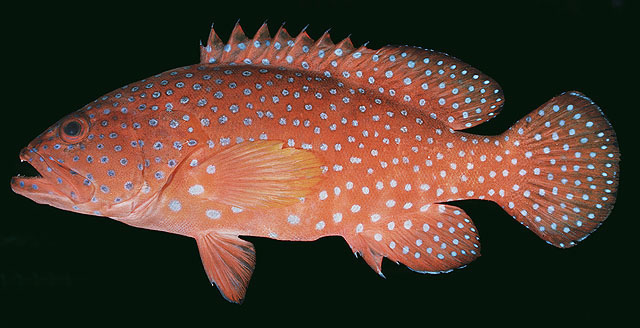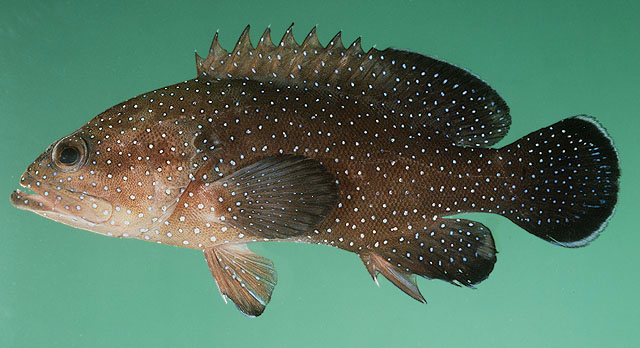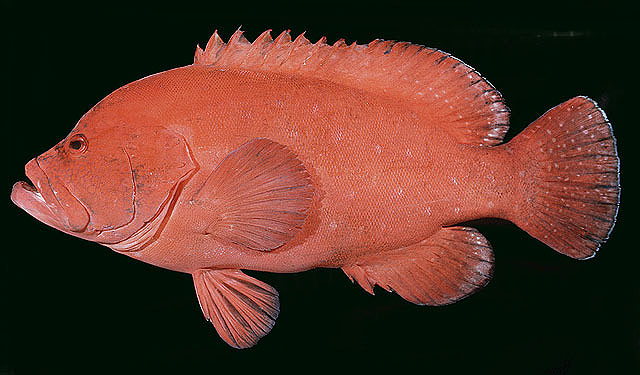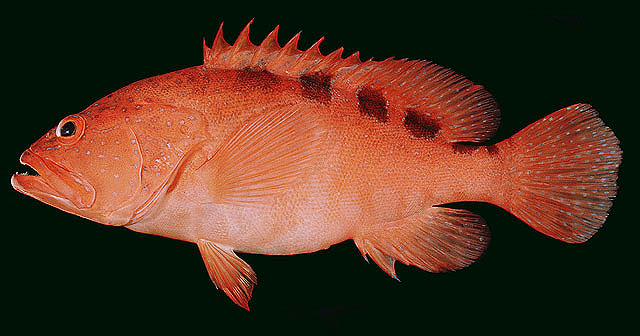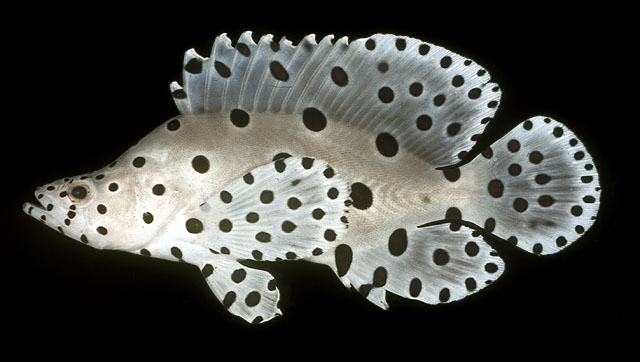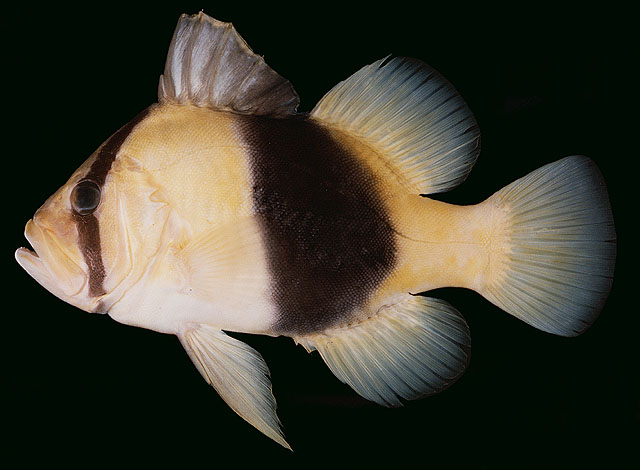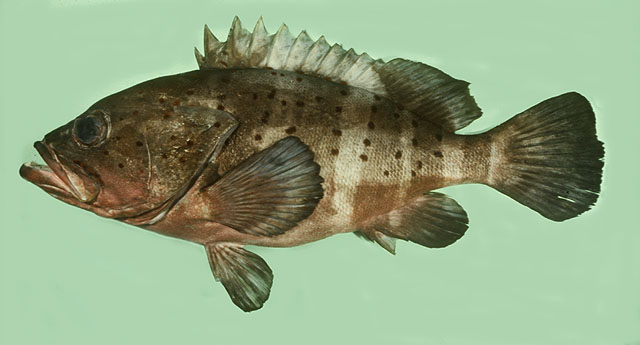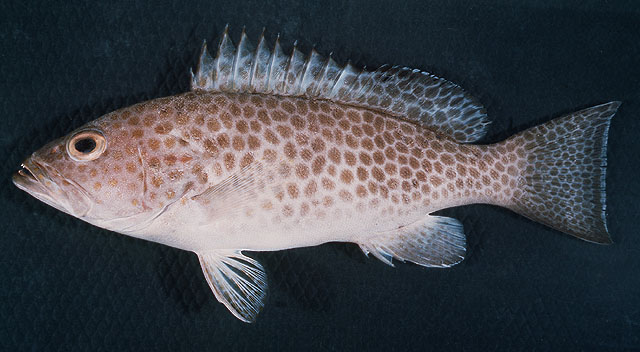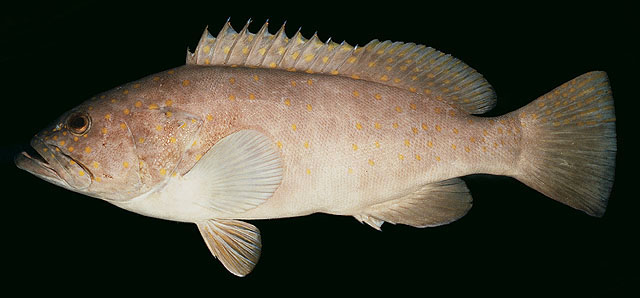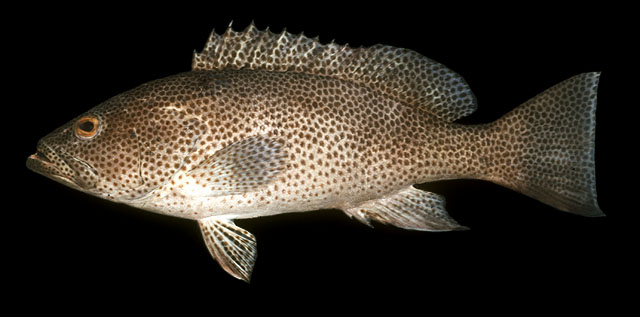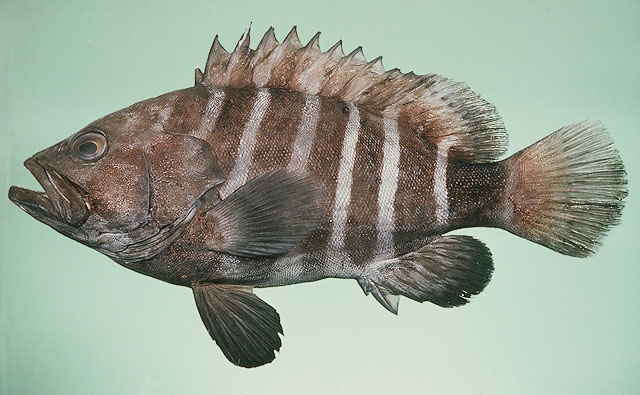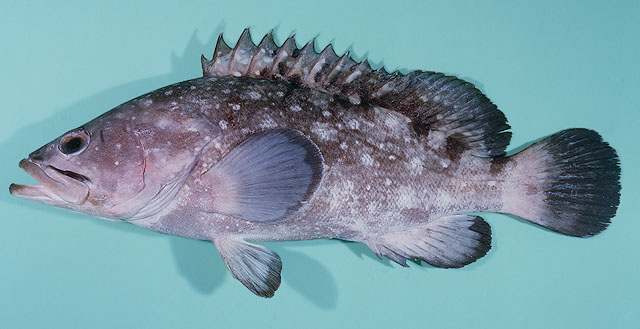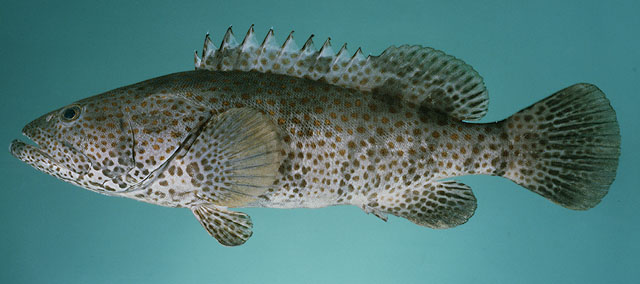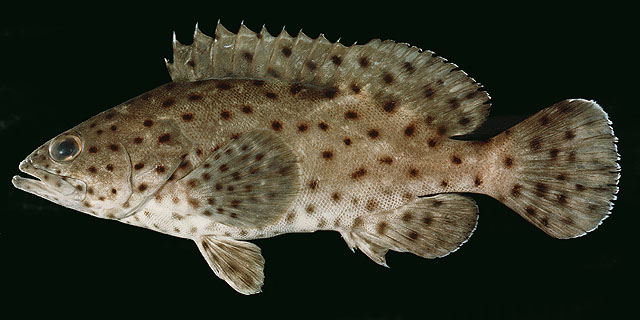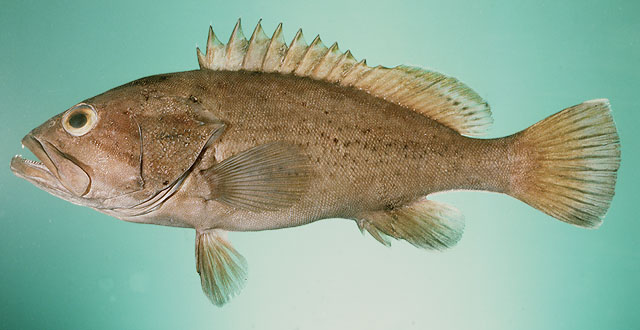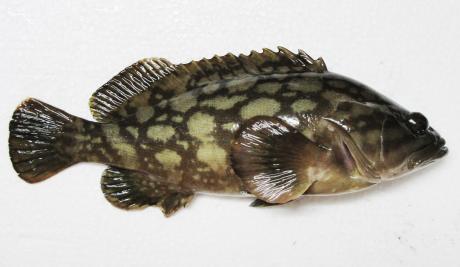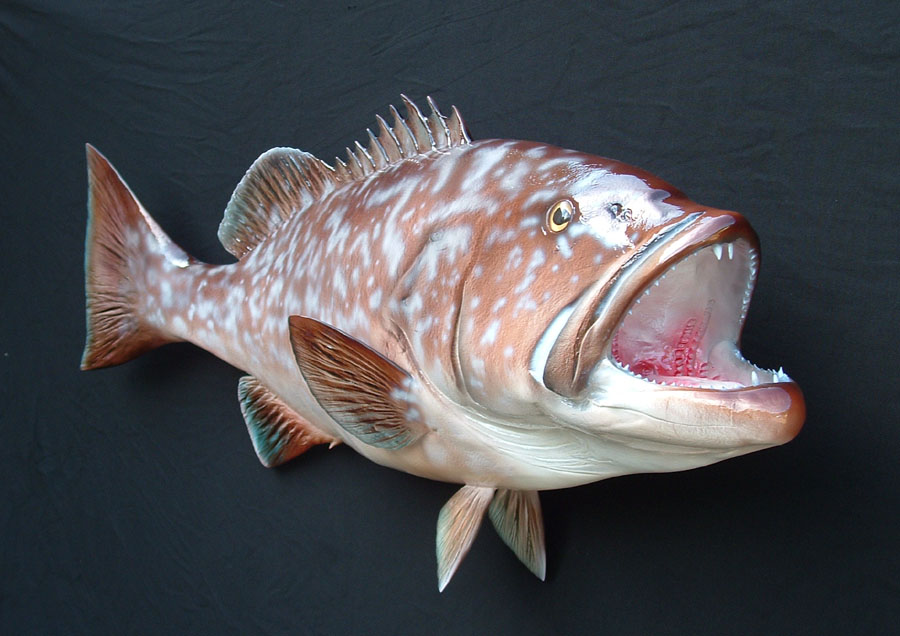
Distribution: Tropical and temperate oceans. Some enter freshwater. Operculum bearing 3 spines - a main spine with one below and one above it. Lateral line complete and continuous, not reaching onto caudal fin (lacking in one species). Dorsal fin may be notched, with 7-12 spines. Three spines on anal fin. Caudal fin usually rounded, truncate, or lunate; rarely forked. Tip of maxilla exposed even with mouth closed. No scaly axillary pelvic process. One spine on pelvic fin; soft rays 5. Branchiostegal rays usually 7. Vertebrae 24-26. Monoecious with some functional hermaphrodites; groupers are protogynous hermaphrodites. Anthiinae are mostly small colorful planktivores feeding primarily on tiny crustaceans and fish eggs. They change sex from females to a few dominant males. Despite their attractive colors they need zooplankton as food and are thus not well suited for aquariums. Groupers attain up to 3 m maximum length and weights of up to 400 kg. They are bottom-dwelling predators and highly commercial food fish. Groupers are hardy aquarium fish, but grow rapidly. Grammistinae get their name from a bitter tasting skin toxin, grammistin, which can kill other animals in an aquarium. They feed on crustaceans and fishes. Subfamilies Anthiinae, Epinephelinae (tribes Epinephelini, Niphonini, Liopropomatini, Diploprioni, Grammistini) and Serraninae (Ref. 39231). Synchronous hermaphroditism is primitive in relation to proterogyne hermaphroditism in the phylogenic evolution of Serranidae (Ref. 56921).
ปลาเก๋าและปลากะรัง ได้แก่ ปลาเก๋า ปลากะรัง ปลากะรังจิ๊ว ในไทยพบ42 ชนิด ส่วนใหญ่ใช้ประโยชน์ในด้านเศรษฐกิจการค้าปลาสวยงาม และ การประมง


